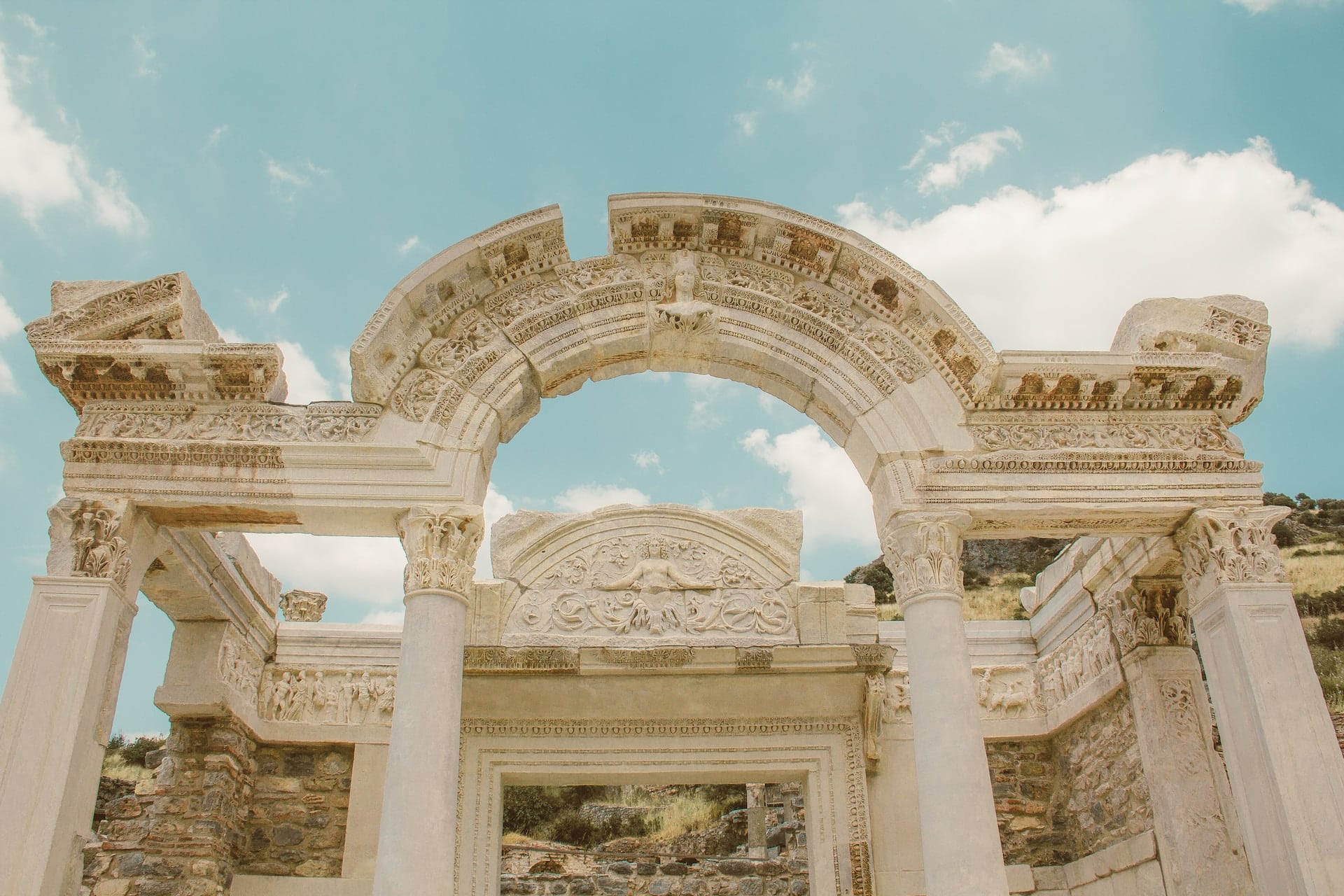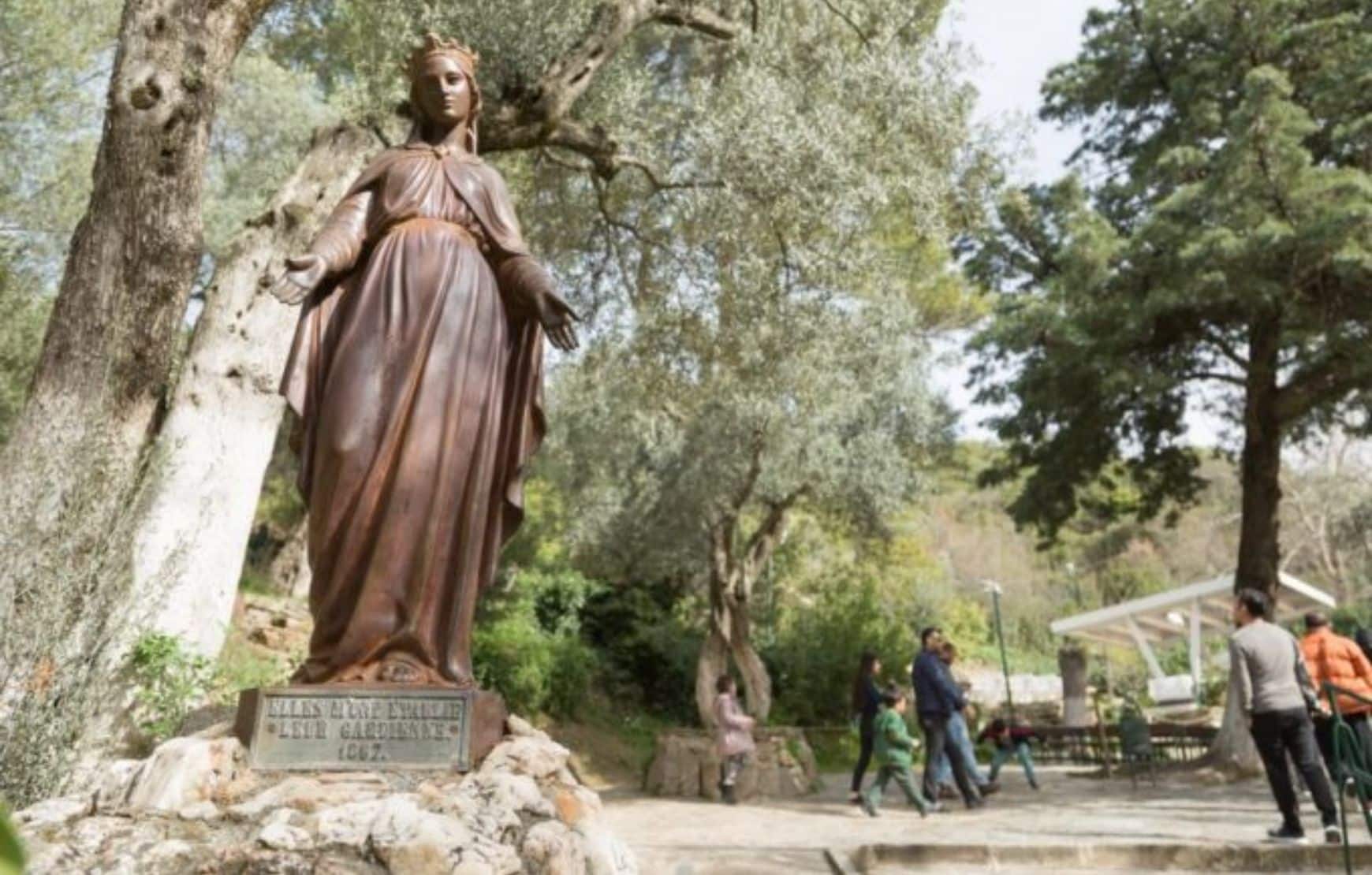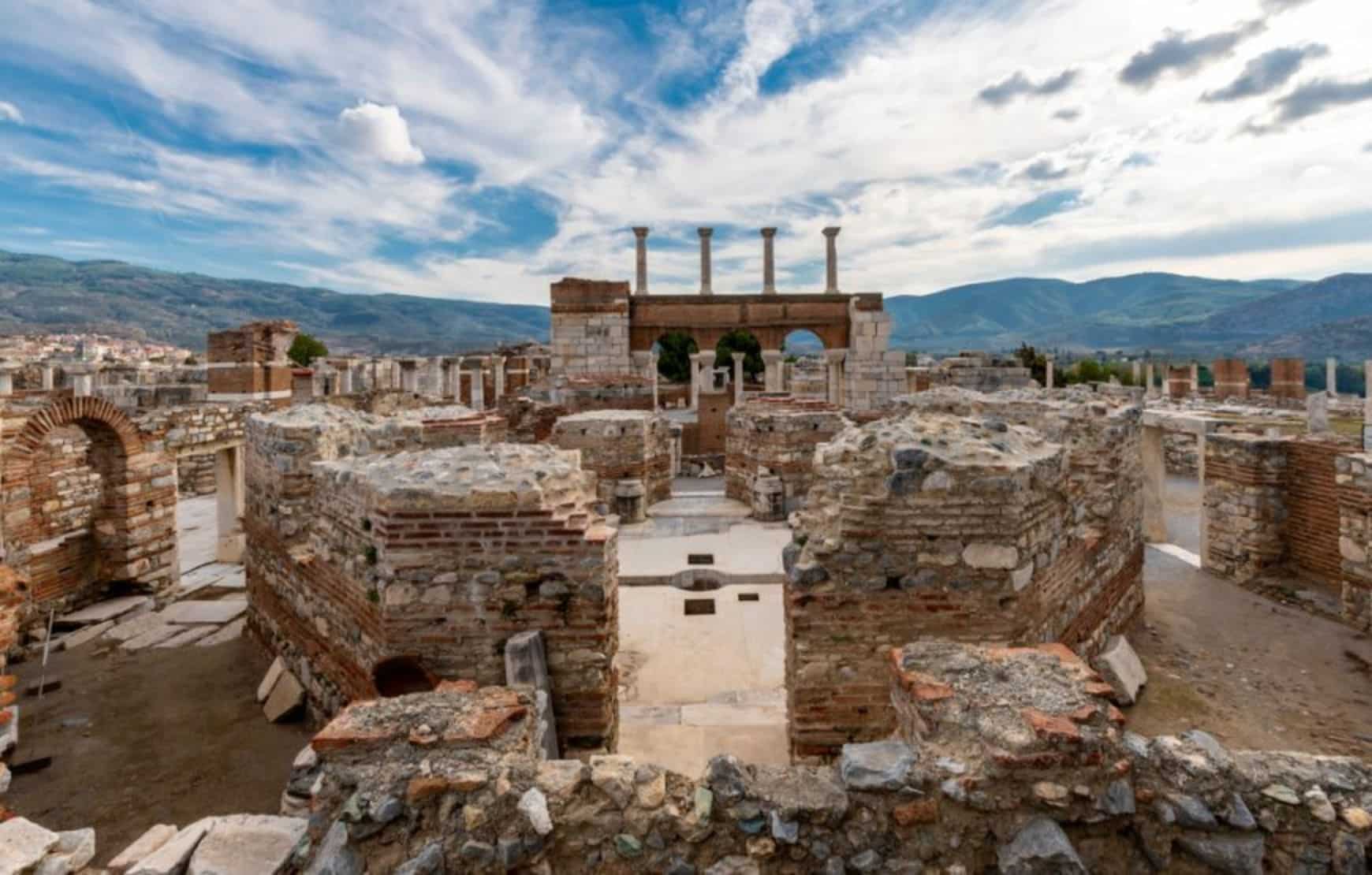The Temple of Hadrian in Ephesus stands as a testament to the grandeur and artistic finesse of ancient architecture. Located in the historical city of Ephesus, and this magnificent structure continues to awe visitors with its intricate design and rich historical significance. In this article, we will delve into the fascinating history, architectural features, and cultural importance of the Temple of Hadrian.
Hadrian’s Temple in Ephesus
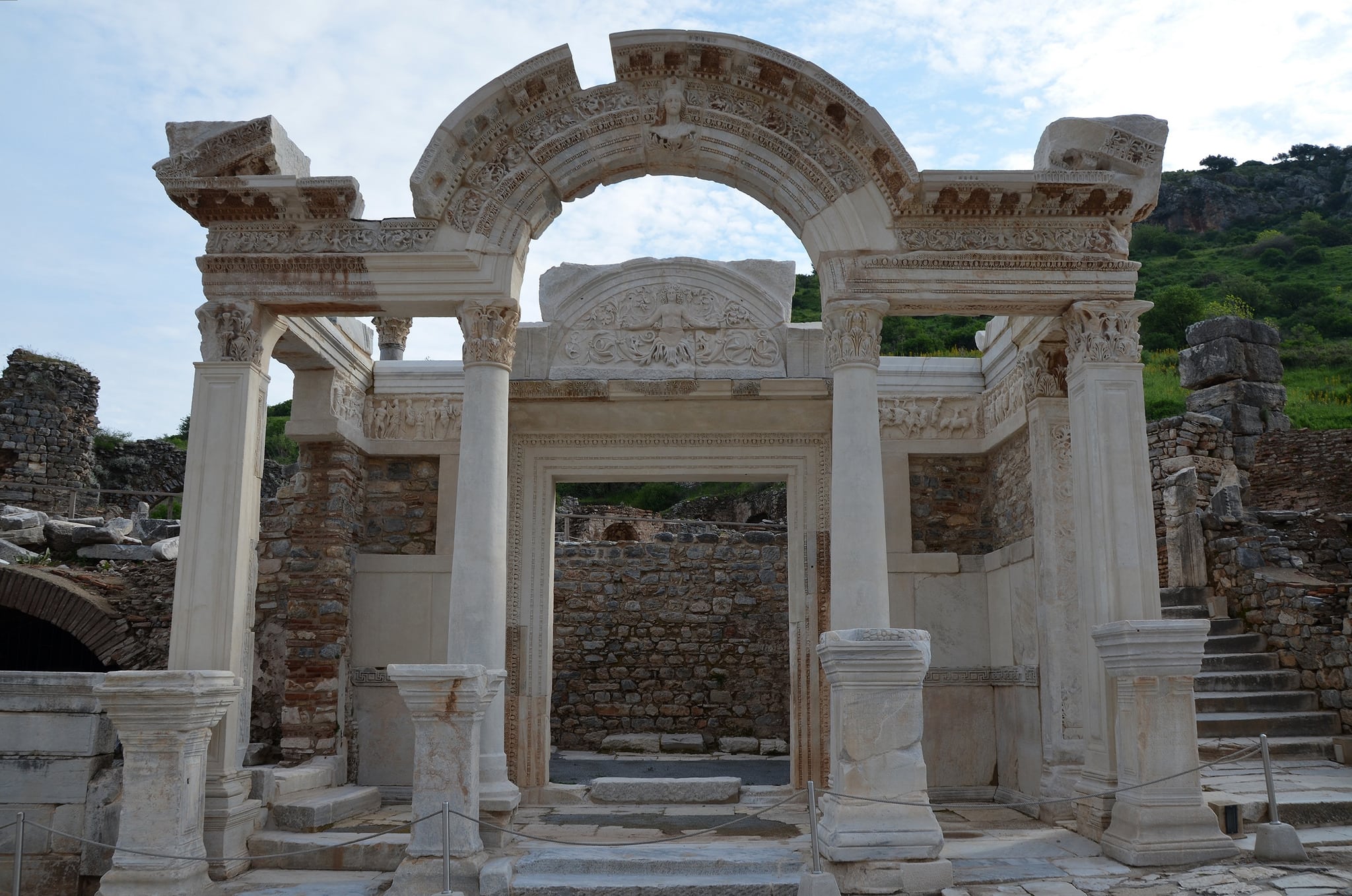
Who is Emperor Hadrian?
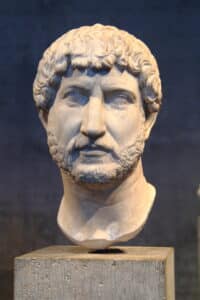
Emperor Hadrian, whose full name was Publius Aelius Hadrianus, was a Roman emperor who reigned from 117 to 138 AD. He is known for his significant contributions to the Roman Empire and his diverse interests in art, architecture, and culture. Hadrian was an avid traveler and extensively visited various regions of the empire during his reign. He implemented administrative reforms and focused on consolidating the empire’s borders. Hadrian is particularly remembered for his patronage of the arts, which resulted in the construction of several iconic buildings, including the famous Hadrian’s Wall in Britain and the Pantheon in Rome. His architectural endeavors often incorporated elements of Greek and Roman styles, reflecting his appreciation for both cultures. Hadrian is regarded as one of the “Five Good Emperors” and left a lasting legacy through his contributions to Roman architecture and his impact on the empire’s governance and cultural development.
What is the significance of the Temple of Hadrian in Ephesus?
The Temple of Hadrian in Ephesus is historically and culturally significant. It showcases architectural excellence, Roman-Greek cultural fusion, Emperor Hadrian’s patronage, symbolizes Roman authority, offers historical insights, and remains a popular tourist attraction.
Where is the Temple of Hadrian located in Ephesus?
The Temple of Hadrian is located in Ephesus, an ancient city in present-day Selcuk in modern-day Turkey. It is situated in the heart of Ephesus, on Curetes Street, and near the Library of Celsus. Visitors can explore the temple’s remains and witness its architectural grandeur within Ephesus’s archaeological site, a popular tourist destination known for its well-preserved ancient ruins.
History of the Temple of Hadrian in Ephesus
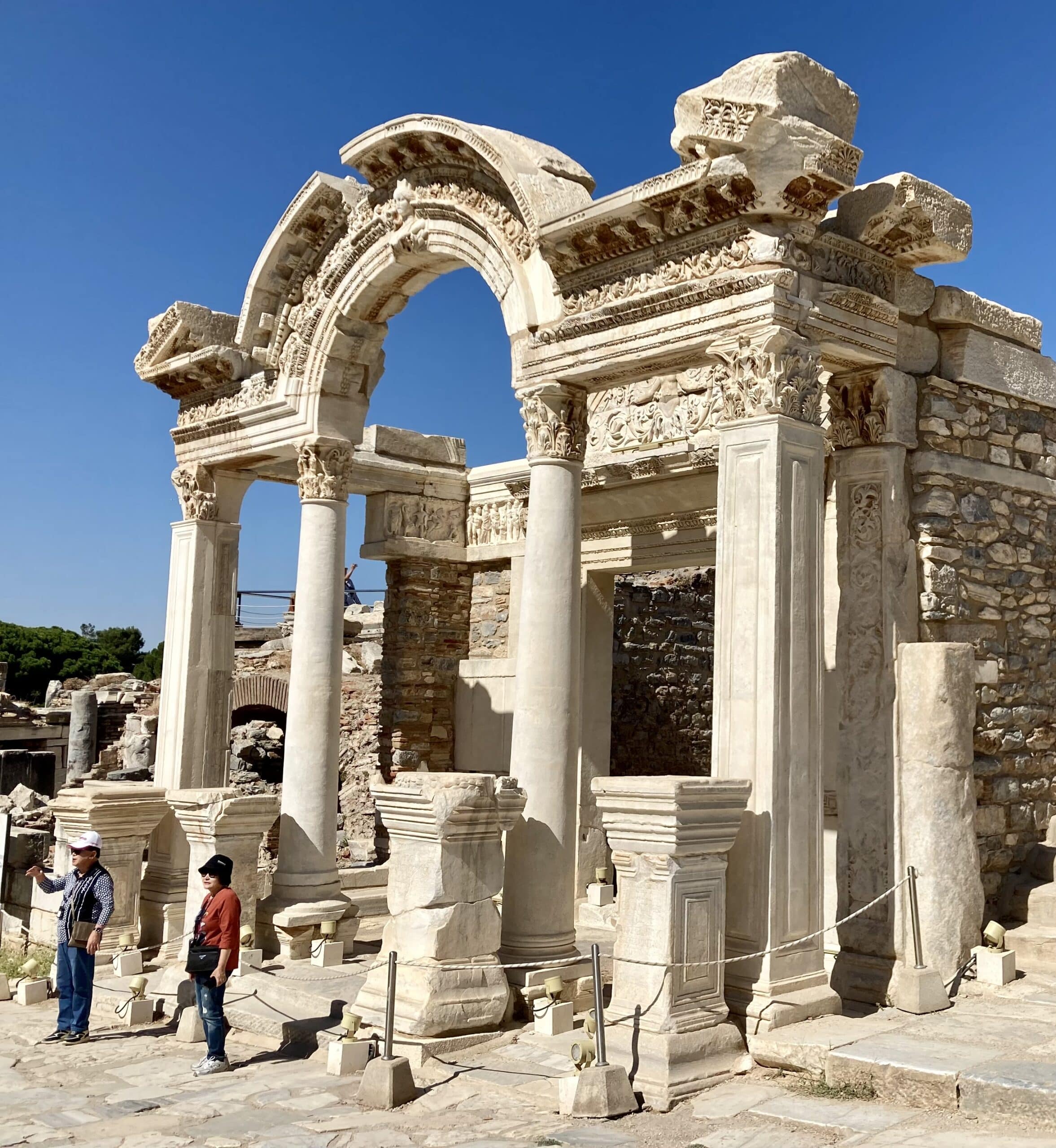
When was the Temple of Hadrian built in Ephesus?
The construction of the Temple of Hadrian in Ephesus was completed in 138 AD, during the reign of the Roman Emperor Hadrian. This date marks the culmination of the building process when the temple was finished and ready for use. It is a significant milestone as it provides a specific timeframe for creating this architectural marvel. The temple’s completion under Hadrian’s rule highlights his patronage of the arts and his desire to leave a lasting legacy. It also signifies the importance of Ephesus as a center of Roman influence and showcases the architectural achievements of the time. The Temple of Hadrian stands as a testament to the craftsmanship and artistic vision of the period, and its completion in 138 AD solidifies its place in history as a remarkable structure in Ephesus.
The Roman Emperor Hadrian and His Legacy
The temple’s dedication to the Roman Emperor Hadrian is a testament to his influential reign and impact on the Roman Empire. Hadrian, known for his passion for architecture and culture, left a lasting legacy through the numerous monumental structures constructed during his rule.
The Construction of the Temple
Quintilius Valens Varius commissioned the construction of the Temple of Hadrian in Ephesus in honor of Emperor Hadrian’s visit to Ephesus. This monumental undertaking aimed to showcase the city’s wealth, power, and loyalty to the Roman Empire.
Architectural Marvels of the Temple
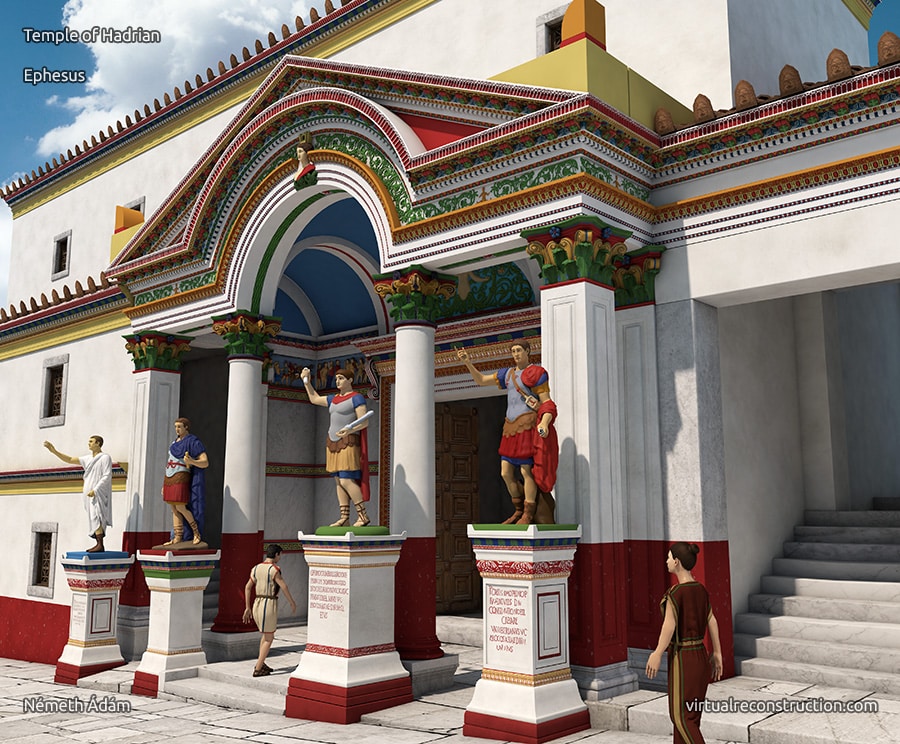
The Elegance of Corinthian Columns
As you approach the Temple of Hadrian, you will be awestruck by the imposing Corinthian columns grace its facade. The Corinthian order, known for its intricately carved acanthus leaves, adds an exquisite touch to the temple’s design. These columns, crafted with meticulous attention to detail, are a testament to the skill and craftsmanship of the ancient architects.
Intricate Relief Sculptures Depicting Mythological Tales
Step closer to the temple, and you will be greeted by the remarkable relief sculptures adorning its friezes. These intricately carved depictions narrate captivating mythological tales and serve as a visual feast for visitors. From scenes of gods and goddesses to mythical creatures, the relief sculptures on the Temple of Hadrian in Ephesus transport you to an ancient world filled with wonder and intrigue.
The Triumphal Arch: A Gateway to Ancient Splendor
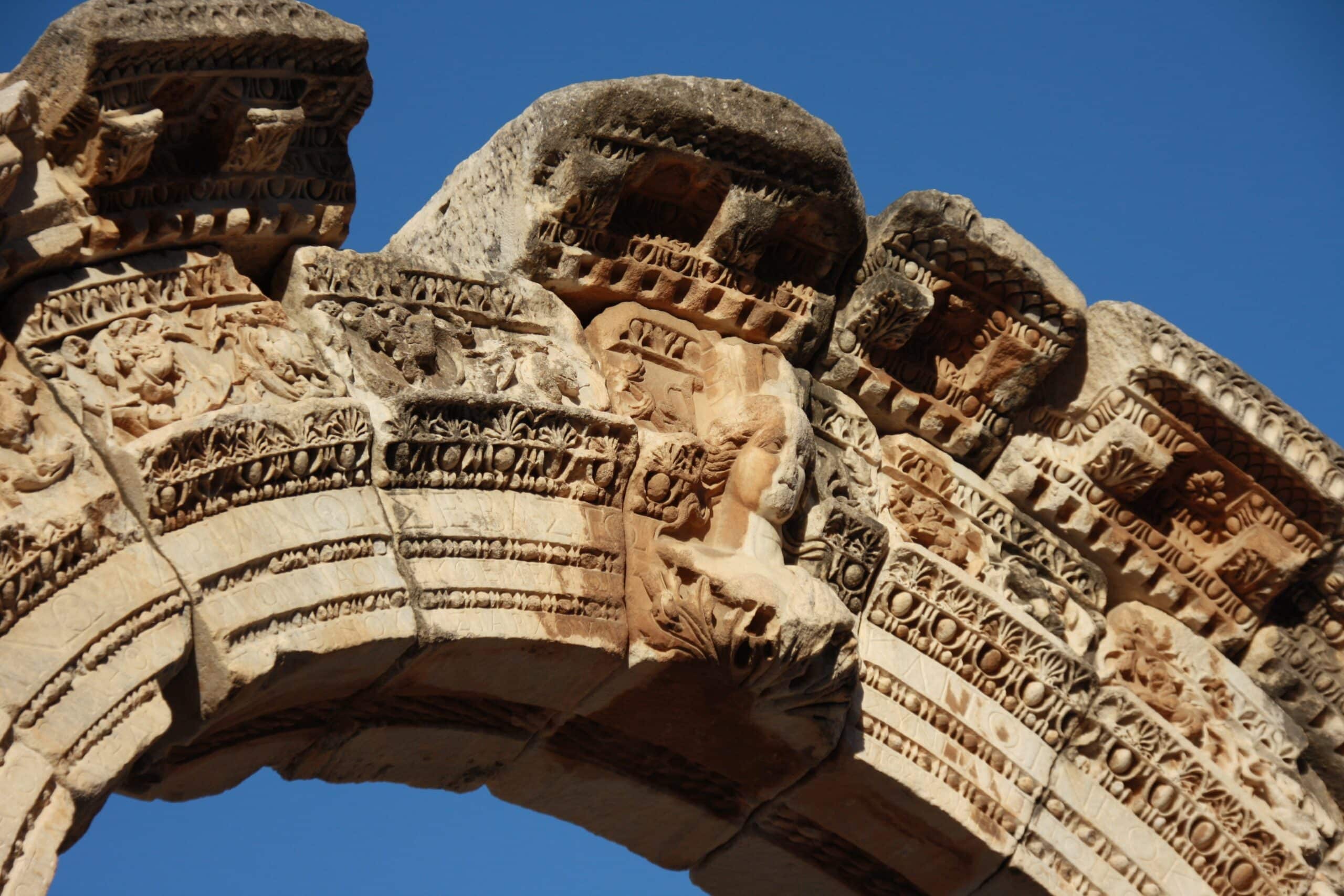
Passing through the grandiose entrance of the Temple of Hadrian, you will encounter the triumphal arch. This arch, adorned with ornate details and flanked by towering columns, symbolizes the grand entrance to the temple. It serves as a gateway to the magnificence and splendor that awaits within.
Relief of Medusa
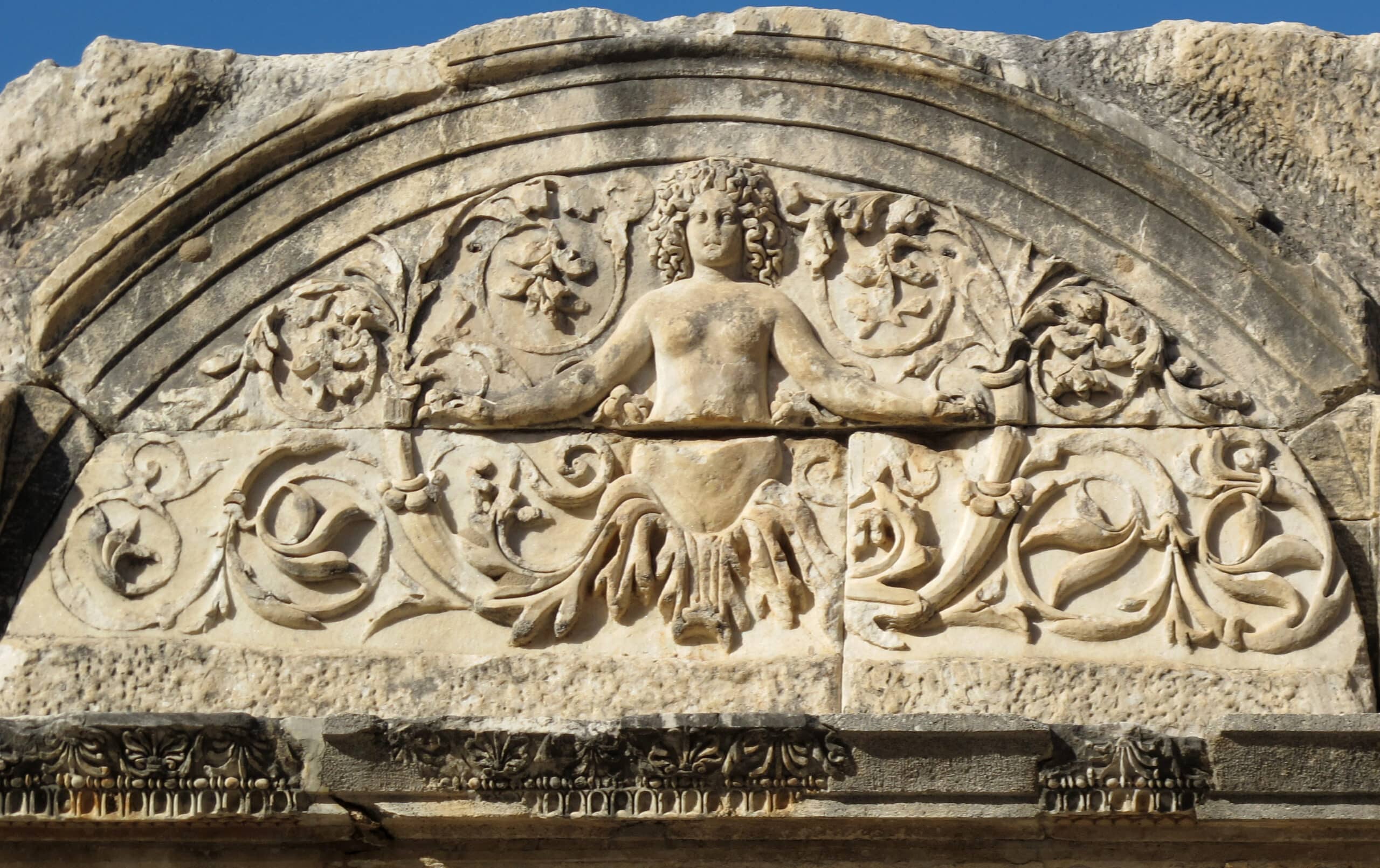
Above the Hadrian Temple entrance is a depiction of a human figure, likely Medusa, adorned with acanthus leaf ornaments. Flanking this central figure, some friezes depict various scenes. One frieze illustrates the foundation of Ephesus, showing Androklos hunting a boar, Dionysus in a ceremonial procession, and the Amazons. Another frieze portrays two male figures, possibly Apollo and Herakles, along with Athena, the moon goddess, and various other figures, including Androkles, the wife and son of Theodosius, and the goddess Athena. It’s important to note that the friezes seen at the site are reproductions, while the original pieces are on display at the Ephesus Museum. Source
Visiting the Temple Today
When was the Temple of Hadrian discovered?
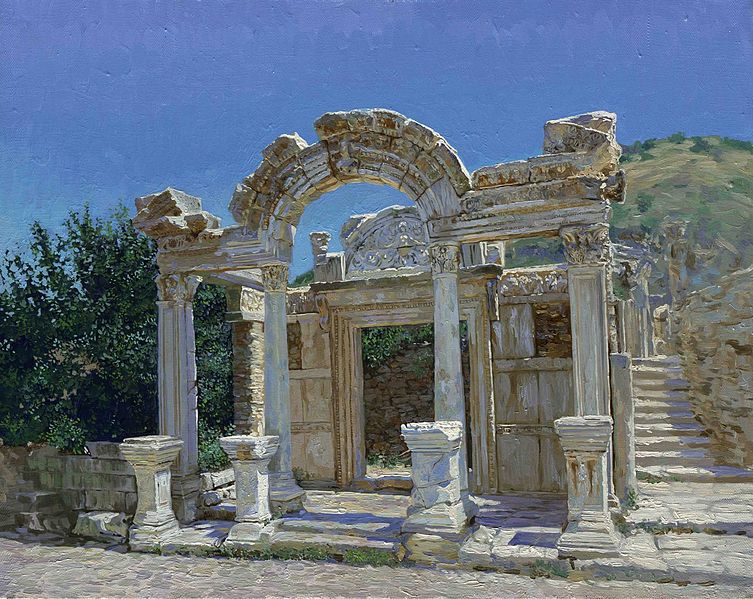
The Temple of Hadrian was discovered in 1956 during excavations led by the Austrian Archaeological Institute (ÖAI). Impressed by its remarkable state of preservation and historical significance, the temple was reconstructed using original architectural elements in 1957/1958. This restoration work aimed to showcase the temple’s original splendor and allow visitors to appreciate its historical and cultural value.
Visiting the Temple of Hadrian today is a captivating experience that allows visitors to immerse themselves in the ancient world. With its rich historical significance and stunning architectural features, the temple offers a glimpse into the grandeur of the Roman Empire. Exploring the temple’s ruins and intricate carvings is made even more enlightening with the option of guided tours. Expert guides provide valuable insights into the temple’s history and cultural importance, enhancing visitors’ understanding and appreciation of this remarkable archaeological site. A visit to the Temple of Hadrian with a guided tour promises an unforgettable journey through time, bringing ancient history to life before your eyes.
Is there an extra entrance fee to the temple?
No, there is no separate entrance fee specifically for the temple. The temple is located within the larger archaeological site of Ephesus, and visitors will need to pay the entrance fee for the ancient city of Ephesus to access the temple and other historical attractions.
The Temple of Hadrian in Ephesus stands as a remarkable testament to the architectural genius and cultural fusion of the ancient world. Its grand Corinthian columns, intricate relief sculptures, and triumphal arch all contribute to its awe-inspiring presence. Visitors who explore the temple are transported back in time, unraveling the stories and mysteries surrounding this magnificent structure. The Temple of Hadrian in Ephesus is a must-visit destination for history enthusiasts and architecture lovers alike, offering a glimpse into the ancient grandeur that once graced the city of Ephesus.
Read more on A Comprehensive Guide to Ephesus Tour: Everything You Need to Know before planning your visit to Ephesus!


